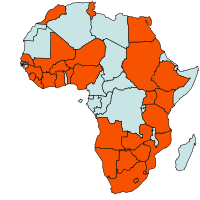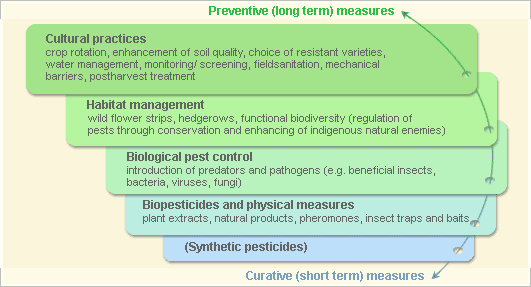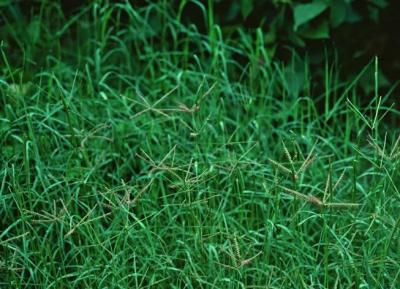
|
Couch grass
Scientific name:
Cynodon dactylon
Order/Family:
Cyperales, Poaceae
Type:
weeds
Common names:
Bermuda grass, Bahama grass, Common star grass, Dhub grass, Devil grass
Host plants: Maize
|
| General Information on Pest and Damage | Cultural practices | |||
| Biology and Ecology | Information Source Links | |||
| Pest and Disease Management |
General Information on Pest and Damage
Geographical distribution
 |
| Geographical Distribution of Couch grass in Africa (red marked) |
Introduction
The couch grass (C. dactylon) is treated by Holm et al. (1977) as the second most important weed in the world after Cyperus rotundus, a status that is justified by its occurrence in virtually every tropical and subtropical country and in virtually every crop in those countries. The weed is an alternate host of some plant diseases such as brown spot, leaf spot, early blight, stripe disease of rice, barley yellow dwarf, lucerne dwarf and of nematodes. Couch grass is used as a cover crop to control erosion and for soil stabilization, feed for livestock, lawn beautification and herbal medicine.
Description:
The stem creeps at full-length along the ground. The leaves are small, linear and blue-green with rough margins. The undersides are smooth but hairy on the upper surfaces. The flowering stalks bear many slender and purplish spikelets. The fruit is reddish-brown or orange-red. The seeds are flattened, oval and straw-coloured. The weed can be spread through seeds, runners, rooting nodes or underground rhizomes. It is mat forming. A single plant can produce up to 720 seeds. It can endure both extensive flooding and drought.
Host Range:
The crops in which couch grass is most commonly a major problem are those of the subtropics that are planted in wide rows, for example, cotton, sugarcane, tobacco, citrus, olive, deciduous fruit, forestry and ornamental species and many vegetables, but also some closer-planted but less competitive crops such as rice, lucerne, lucerne and grass pastures, onion and jute. Biology and Ecology
Pest and Disease Management
Pest and disease Management: General illustration of the concept of infonet-biovision

Further below you find concrete preventive and curative methods against Couch grass.
Cultural practices
Control Methods
- Proper selection of seeds (ensure whatever crop you plant its seeds are not contaminated with couch grass seeds)
- Thorough land preparation
- Regular plant monitoring
Legumes or other cover crops are sometimes used for smothering C. dactylon since the weed does not tolerate deep shade. Vigorous crops and higher crop density may be important in reducing weed competition.
Traditional techniques of controlling C. dactylon rely very little on manual methods, as it easily survives shallow hoeing and positively thrives on mowing. However, the benefits of deep cultivation have been confirmed in Botswana and Zimbabwe where double ploughing, either after crop harvest or before the onset of the next season's rains, provided a high degree of control and was beneficial to crop yields.
The main non-chemical approaches to control couch grass are deep tillage and shading/smothering crops.
For more information on weeds click here
Information Source Links
- CABI. (2005). Crop Protection Compendium, 2005 Edition. © CAB International Publishing. Wallingford, UK. www.cabi.org
- Holm, L.G. Plucknett, D.L. Pancho, J.V. Herberger, J.P. (1977). The world's worst weeds. Distribution and biology. Honolulu, Hawaii, USA: University Press of Hawaii. ISBN 0-8248-0295-0.

 Back
Back
